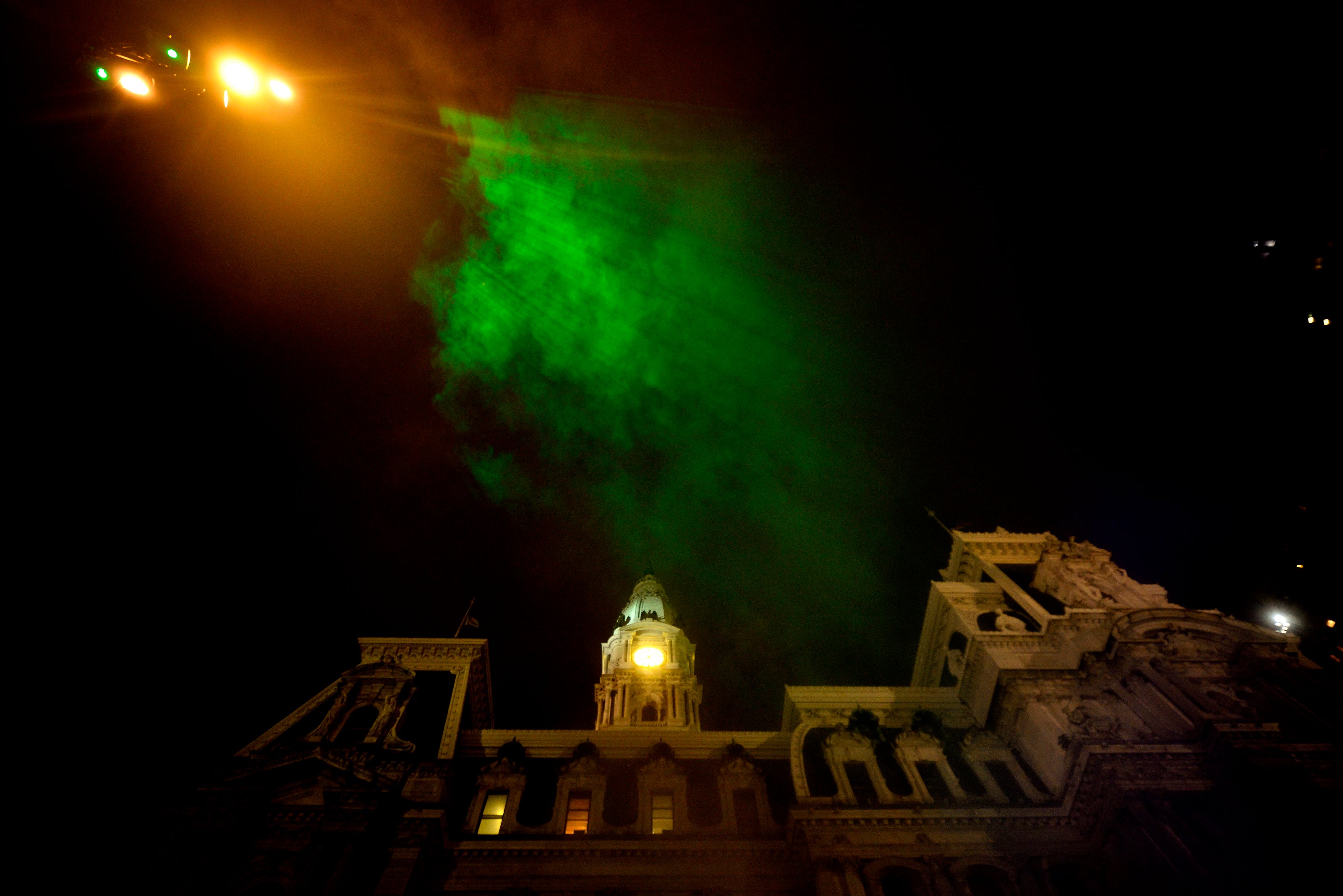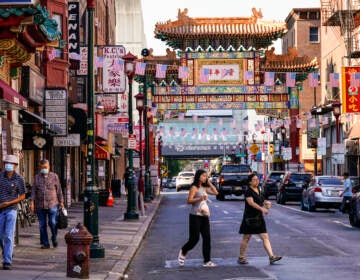The story behind the light-colored mist in Dilworth Park’s new installation

Since it opened in 2014, after a $55 million renovation by the Center City District, Dilworth Park on the western apron of Philadelphia City Hall has acted as a water park. It is outfitted with a large field of water jets that kids can play in in the summer; in the winter, it turns into an ice rink.
Curving pathways cut through the 11,000-square-foot grid of jets. Over the last four years, people have learned they can walk on them to experience the water feature without getting wet.
However, those aren’t just trails. They follow the path of the underground Broad Street Line, Market-Frankford Line, and the trolley system directly below. Those paths were built to be the infrastructure of a new permanent artwork called “Pulse,” designed to flow curtains of mist – colored with light – triggered by the movement of SEPTA subway cars beneath.
“Pulse” also responds to the history of the site.
“This is the site of the original waterworks for Philadelphia, and this plaza was created when the train station was knocked down, and the trains ran on steam,” said artist Janet Echelman. “I wanted to bring together the story of the industrial period of this city. Water and transportation are at the heart of this artwork.”
Whenever a subway car enters the underground City Hall station, colored mist rises from the plaza like the steam exhaust of a locomotive. As the car stops to offload and accept passengers, the aboveground mist chugs stationary. Then it carries on when the subway car moves forward.
The work will always be active, day and night, except when the plaza becomes an ice rink in winter.
When “Pulse” was unveiled Wednesday night, only the Green Line – the trolley path and shortest of the three – was activated. The other two lines are not yet complete.
Echelman and the Center City District have been working on the installation for almost 10 years. They had to develop new technology to pull it off. Echelman said nobody has ever done this before, including herself.
“We developed prototype after prototype to create this new way of making art, using tiny atomized water particles and the flow of air to make these moving curtains,” she said.
Echelman, who is based in Boston, is known for making massive, floating aerial sculptures made of very thin but strong threads that react to micro-currents in the air. Water and mist had been outside her material expertise.
The project was also delayed for financial reasons. Center City District needs to raise an additional $2.9 million to finish it, on top of the $1.2 million already spent.
The demonstration this week was to finally get the work in place, even if incomplete, and show proof-of-concept.
“We decided let’s do the first phase because there’s no amount of Photoshop, no amount of rendering to convey what mist looks like when it’s blowing and mixing with light,” said Center City District president of CEO Paul Levy.
Center City District is actively fundraising to cover the next two-thirds of the project. There is no determined completion date.
WHYY is your source for fact-based, in-depth journalism and information. As a nonprofit organization, we rely on financial support from readers like you. Please give today.










